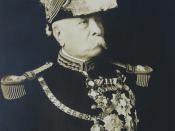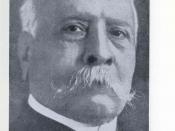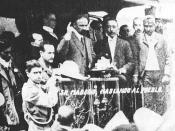The Mexican Revolution was long and bloody. It should be of interest to the Hoover Institution on War, Revolution and Peace. It began in 1910. Francisco Madero was the Liberal candidate for the presidency, but Porfirio DÃÂaz, using strong arm tactics, was reelected. Madero was imprisoned and then went into exile in the US. He called on the Mexican people to rise on November 20 in defense of the Plan de San Luis Potosàwhich called for the deposition of Porfirio DÃÂaz and the restoration of democracy. Madero crossed into Mexico, but finding little support, soon returned to the US. Since the revolt was a total failure, the date was not celebrated until this year, when President Fox staged a big, peaceful parade of the Zócalo, Mexico City's main square.
In 1926, the Archbishop of Mexico, José Mora y del RÃÂo, declared that the Church could not go by the restrictions they imposed.
President Plutarco ElÃÂas Calles retorted by imposing them more heavily. A bloody Civil War broke out between army troops and the Catholic rebels, whose cry was "áViva Cristo Rey!" and that`s why they were called Cristeros. The war was bloody. One photograph show cristero corpses hanging from every post along a railroad track. The Cristeros were crushed. Avila Camacho became president in 1940, and in the following decades the restrictions on the Church were slowly relaxed.
The problems with which it started his government ÃÂvila Camacho were not simple: the international situation was tense by World War II and internally was not in agreement with the socialist education implanted by Cardinal red. The problems of political lack of unity seemed to be solved in a ceremony the 15 of September of 1942, in that the ex-presidents of postrevolutionary Mexico participated. After the collapse of two tankers...


